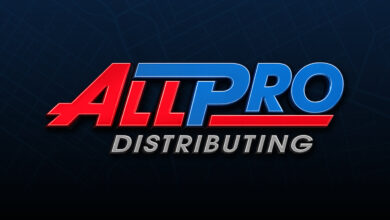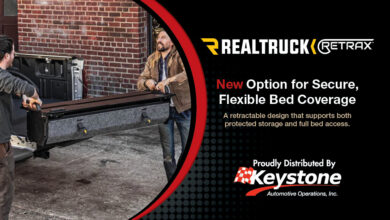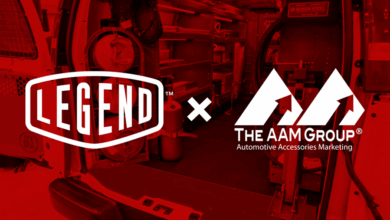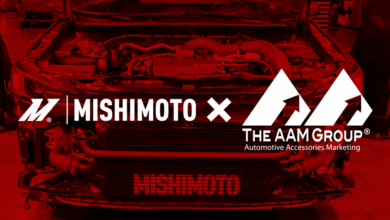The Power of Partnership: Successfully Navigating the Evolving Fleet Industry
Sponsored by Keystone Automotive Operations

Like many industries, the work truck and van market faced unprecedented impacts in recent years. Severe supply chain disruptions coupled with record-high inflation swelled company fleet investments across the board, from higher acquisition, fuel, repair and maintenance costs to increased labor and interest rates.
However, those in the trenches report clearer skies ahead – even as fresh challenges begin to take shape.
State of the Market
“Currently, part and supply constraints present the biggest challenge,” says David Schnur, strategic account sales manager at Holman, a fleet and automotive service provider. “Manufacturers and upfitters have been extremely busy with high-order volume, resulting in extended lead times. The ongoing labor shortage is also a significant challenge, and one that will likely linger for the foreseeable future.”
While the underlying microchip shortage improved slightly year-over-year, the situation remains a formidable headwind to commercial truck and van sales. In fact, according to Delamon Rego, senior vice president of commerce at DECKED, such challenges are the greatest roadblock to industry expansion. The shortage impacts overall supply levels and timely production which, like everything else, creates a domino effect across the industry-at-large.

Fleet production volume continues to pick up, helping to drive overall new-vehicle sales.
For example, when businesses need to source multiple vehicles from various manufacturers in order to fill their fleets, managers cannot streamline maintenance schedules, stock spare parts efficiently or ensure consistent training for mechanics. As such, data becomes more difficult to aggregate and cost-cutting opportunities trickier to spot.
Industry professionals also are concerned tariffs on Chinese steel and the ongoing Russia-Ukraine war will exacerbate upward pressure on aluminum and steel commodity prices.
However, a light is emerging at the end of the tunnel, from increased new-vehicle production and more plentiful dealership inventory to a notable decrease in “build shy” units. Schnur says overall lead times continue to improve. He predicts most manufacturers will be at or near pre-pandemic levels in the second half of this year.
In addition, OEMs are allocating more production volume to fleet vehicles. According to J.D. Power, fleet sales are predicted to total 258,500 units in May, a 49.6% year-over-year boost on a selling day adjusted basis. Overall volume is expected to account for 19% of total light-vehicle sales, up from 15% compared to last year. Though white truck and van shipments are expected to tick up in 2023, delivery remains sporadic.

America’s best-selling commercial van, the Ford Transit, has been a popular choice among businesses and fleet operators due to its versatility, spacious cargo capacity and various configuration options.
Schnur points to the last mile delivery van as one of the fastest growing segments in the industry, giving fleet operators a versatile platform and “virtual blank canvas for upfitting.”
“Our engineering team has a group dedicated to learning more about how these units are being used in the field and developing new components and equipment to transform commercial vans into vocational powerhouses,” Schnur says.
In addition, he says mobile service vehicles are another rapidly-growing segment presenting van upfit opportunities.
“As consumer habits shift and individuals prioritize convenience, a greater number of automotive repair vendors are beginning to offer mobile service options. Larger commercial vans such as the Ford Transit and Mercedes-Benz Sprinter can easily be outfitted as a mobile service center, allowing vendors to bring the ‘repair facility’ directly to the consumer,” he explains.
Investing in the Future
Annual industry barometers like the NTEA Work Truck Show in Indianapolis, Indiana, indicate a market ripe with innovation and opportunity. Rego and team point to the RAM Revolution and GM upfitted police vehicles as promising platforms, which received “exceptional feedback” at the event.
Since vans shouldered a harder hit in microchip shortages, he says businesses and consumers alike were inspired to rethink van upfits and create effective alternatives with truck platforms. As such, the company sees growing interest in drawers, slide and cap combinations. DECKED, which recently acquired CargoGlide, is making significant investments in tooling, equipment and factory expansion to better accommodate unrelenting demand.

Organization meets ergonomics in CargoGlide-equipped drawer setups from DECKED.
Likewise, at Holman, Schnur says engineers are hard at work developing innovative solutions that accommodate new models coming to market, along with the ever-evolving ways customers use these vehicles. “We recently introduced a new forklift loadable truck rack for service bodies and pickups, and the initial feedback has been overwhelmingly positive,” he says.
With the rise of connected technologies, these companies see digital upfits playing a greater role in modern fleet management as well. Many vehicles now come standard with onboard telematics systems, so operators can monitor a wealth of data in real-time, from vehicle performance and maintenance schedules to driver safety and behavior. By leveraging this information, businesses can quickly identify inefficiencies and make adjustments as necessary.
As usual, those seeking more customized setups can find them in the aftermarket. For example, Holman offers personalized fleet management solutions that integrate with OEM-installed devices, allowing managers to tailor data acquisition and analytics to their fleet’s specific needs.
Emerging Challenges
Both Schnur and Rego agree electrification is a game-changing trend, driving decisions around lightweighting, logistics, operations and personnel.
“Without question, electric vehicles, hybrids and other alternative-fuel vehicles continue to generate significant interest across the industry. We see a growing number of fleet operators exploring electrification strategies and integrating EVs into their fleet mix,” Schnur says. “As more EV models come to market, the entire industry is adjusting on-the-fly. Whether it is determining the best charging strategy for these vehicles, fine-tuning upfit components or developing new manufacturing processes to install equipment, we’re all navigating this transition together as fleet operators embrace EVs.”

The all-new Mercedes e-Sprinter will join a growing lineup of available commercial EVs when it goes on sale in the latter half of 2023.
Schnur admits electrification continues to present challenges for many manufacturers. Since most EV units have no-drill zones in the flooring due to the location of batteries, installation techniques must be altered accordingly.
Upfitters also need to be mindful of the center of gravity for EV units compared to traditional ICE vehicles – a critical factor when installing ladder racks, toolboxes, service bodies, etc.
“Additionally, the range of the EV itself is influencing some specification strategies,” Schnur says. “For example, a traditional ICE service van may only return to a company’s facility occasionally, so it might require additional storage capacity to hold parts, tools and other equipment. Conversely, an EV service van is likely returning to the facility each evening for charging and may not need nearly as much storage capacity, and fleet operators will likely want to keep payload to a minimum to help optimize range.”
The “Keystone” of Fleet Management
Upfitters may not be able to slow the steady march of technological development reshaping the fleet industry, but partnering with reliable suppliers and distributors will set the stage for success – plus assist with a pivot when necessary.
“Warehouse distributors like Keystone Automotive are critical to optimizing an efficient supply chain,” Schnur says. “The inventory levels at warehouse distributors allows the industry to get what they need quickly to minimize potential disruptions or production bottlenecks. Such distributors play an important role for large-scale upfitters, while also providing the best product source for most small and midsize upfitters.”

With eight warehouses and 44 crossdocks throughout the U.S. and Canada, Keystone’s fleet of company-owned trucks and trailers log more than 82,000 runs and 30 million miles each year, making over 1.54 million customer stops to ensure orders are delivered accurately and on time.
Overcoming challenges – both new and familiar – and leaning into the future opportunities afforded by EV platforms requires industry-wide collaboration, continuous education and skillful adaptation to effectively meet the evolving needs of business fleets.
A quality distributor like Keystone Automotive serves as a critical support system, acting as a knowledgeable partner and valuable resource with more than 50 years’ experience. In addition to key brands and products, upfitters also directly benefit from expertise, manufacturer relationships, technical support and access to critical training.
“As the ‘keystone’ of automotive wholesale distribution within the LKQ Specialty family, our resources are your resources,” says Bill Rogers, president at Keystone Automotive.
He points to the company’s diverse supplier networks, purchasing power and leading inventory management practices as effective ways for customers to navigate dynamic market conditions like present-day. With access to expanded inventory, next-day service, tailored marketing support and advanced educational resources, Rogers says businesses of all sizes can start, grow and thrive with Keystone Automotive – even during transitionary times.
“Overall, the entire industry is extremely healthy and is poised to continue to thrive,” Schnur adds, noting how supply chain disruptions and pent-up demand may cause some short-term struggles but will ultimately influence the entire supply chain in the months (and years) ahead, “and continue to fuel growth across the industry for years to come.”
About This Sponsored Content
Keystone Automotive Operations is the leading distributor and marketer of automotive aftermarket products and services, uniquely positioned to offer customers and suppliers substantial scale, the most comprehensive inventory selection in the industry, high levels of customer service and innovative marketing support. Keystone is committed to expanding its offerings to meet the ever-growing needs of its customer base, providing them everything they need, when they need it.



